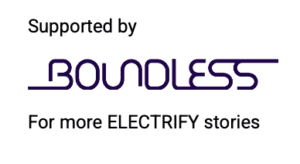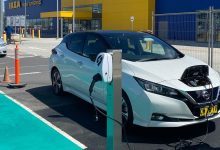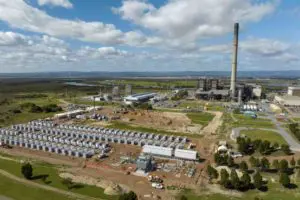 The ACT government’s mission to electrify everything and power it all with renewables continues to gather speed, with new funds set aside for home energy upgrades, to get gas out of government operations, and to support EV uptake.
The ACT government’s mission to electrify everything and power it all with renewables continues to gather speed, with new funds set aside for home energy upgrades, to get gas out of government operations, and to support EV uptake.
The ACT Labor-Greens government says it will boost investment in the territory’s Sustainable Household Scheme to $280 million on Tuesday in the 2023-24 territory budget, to help households to make their homes energy efficient and fossil-fuel free.
The new funding shifts the focus of the scheme from driving the uptake of rooftop solar, to helping to fund home upgrades to electric heating, hot water, stove tops and vehicles, as well as EV charging infrastructure, battery storage systems, and ceiling insulation.
Another $70 million has been allocated to the task of phasing out gas from government operations, replacing gas with electric heating and hot water across a range of territory buildings including schools, hospitals, emergency services and government offices.
The first of these government electrification upgrades will inlcude the Manuka Pool, Weetangera Primary School and the Gungahlin Joint Emergency Services Centre.
The push to get gas out of homes and businesses in the ACT was written into territory law earlier this month, after the Barr government passed a landmark, Australian-first legislation prohibiting the use of fossil gas in new buildings.
The ACT government’s Climate Change and Greenhouse Gas Reduction (Natural Gas Transition) Amendment Bill establishes the legal framework to end new gas network connections, a law that will to come into play in November of this year.
The ACT already sources all of its electricity from 100 per cent renewables, which have once again protected households from a big increase in bills, and announced last year that all fossil fuel gas connections would cease before 2045, the same date as the territory’s net zero emissions target.
The new rules will prohibit all new fossil fuel gas network connections in residential and commercial areas, with connections in industrial areas still allowed until a further regulation is made.
For the electrification of transport, the Barr government’s 2023-24 budget will also boost investment in the territory’s public EV charging network, towards the goal of installing 180 public EV chargers by 2025.
And at the network level, further investment in the Big Canberra Battery project will help fund the rollout of large-scale to neighbourhood-scale batteries, the government says.
“Under this next phase of the Scheme, we’re helping Canberrans transition from gas to electricity, by upgrading their electrical appliances,” said chief minister Barr in a statement on Sunday.
“This will have an enormous impact on the sustainability of Canberra households and will also have a positive impact on family budgets.”
Modelling from Rewiring Australia, headed up by Saul Griffith, demonstrates that electrification with commercially-available technologies is the fastest, cheapest way to combat inflation and decarbonise economies.
At the household level, Griffith says replacing gas fired heating, water, cooktops and petrol/diesel cars for efficient electric alternatives and then powering them with rooftop solar can between $3,000 and $5,000 from annual energy bills.










